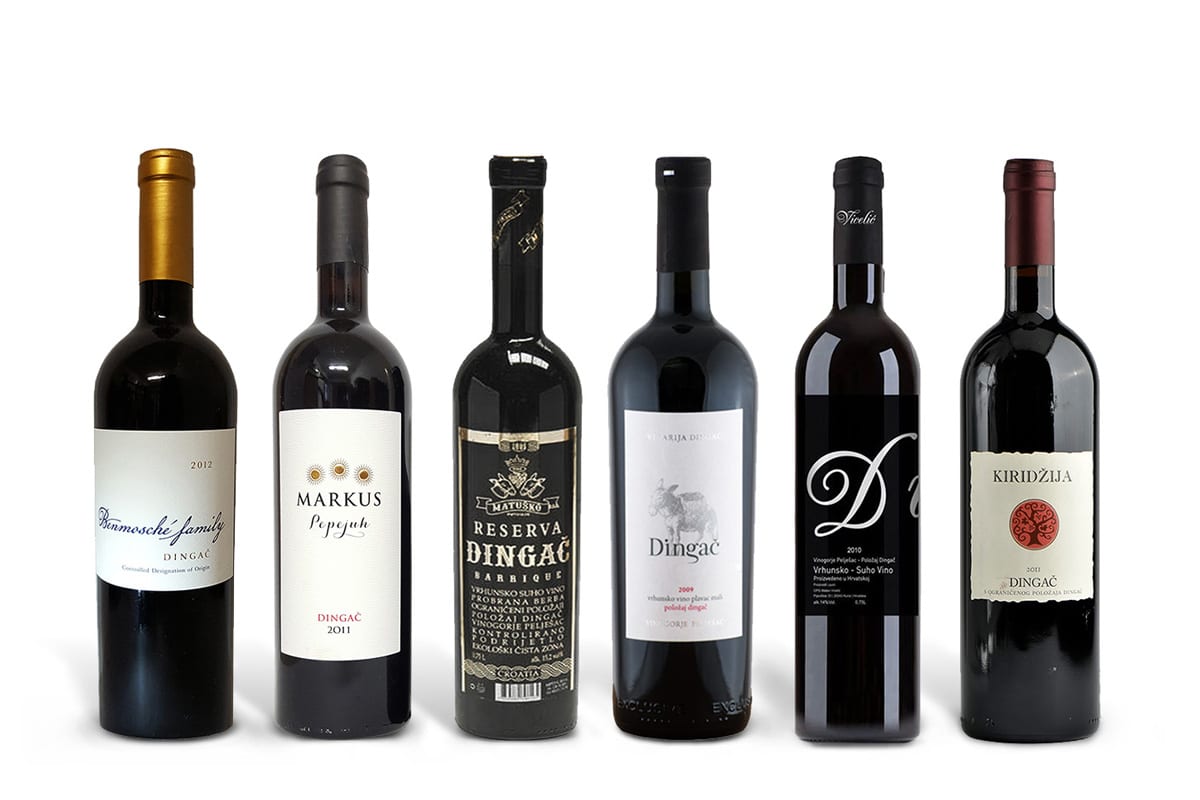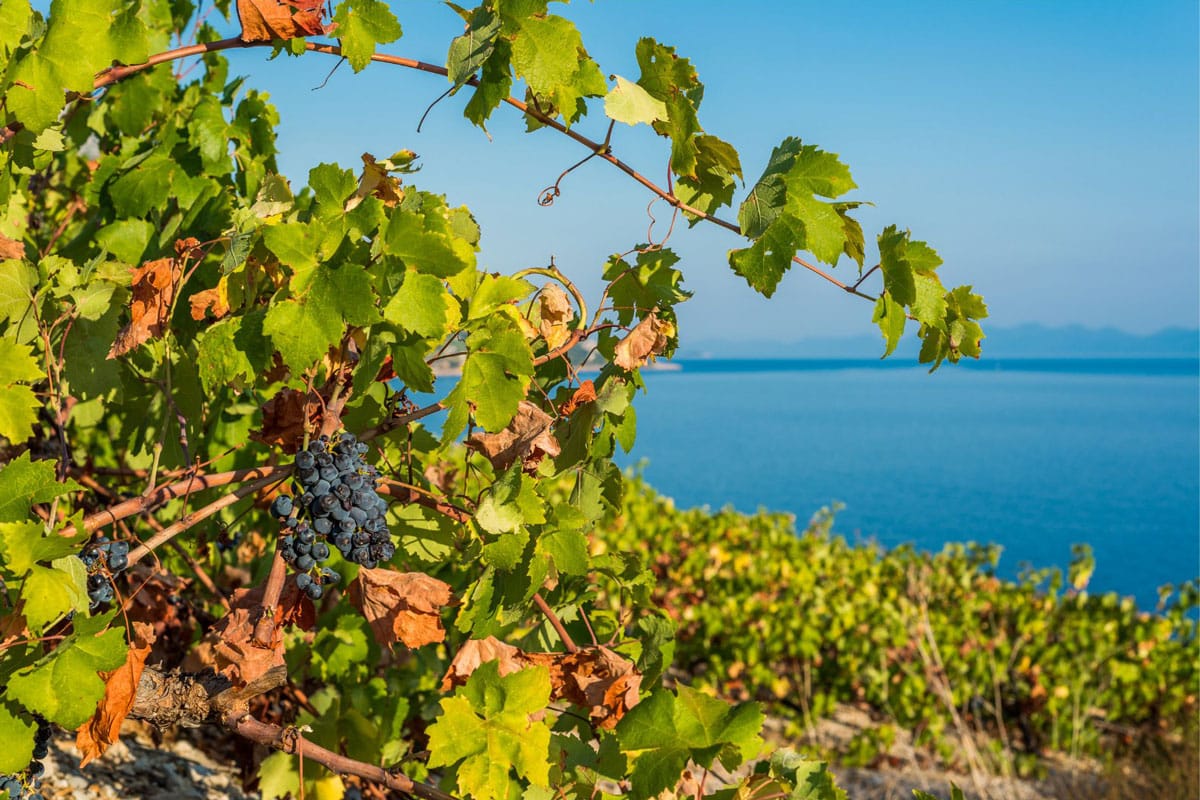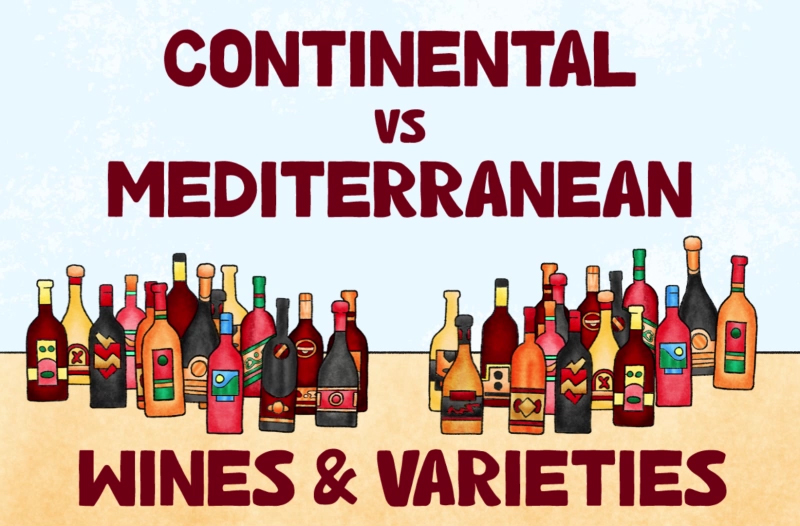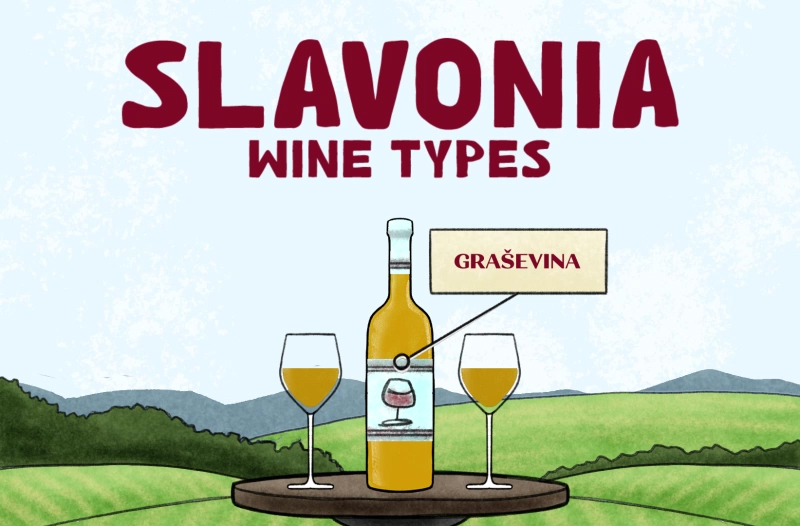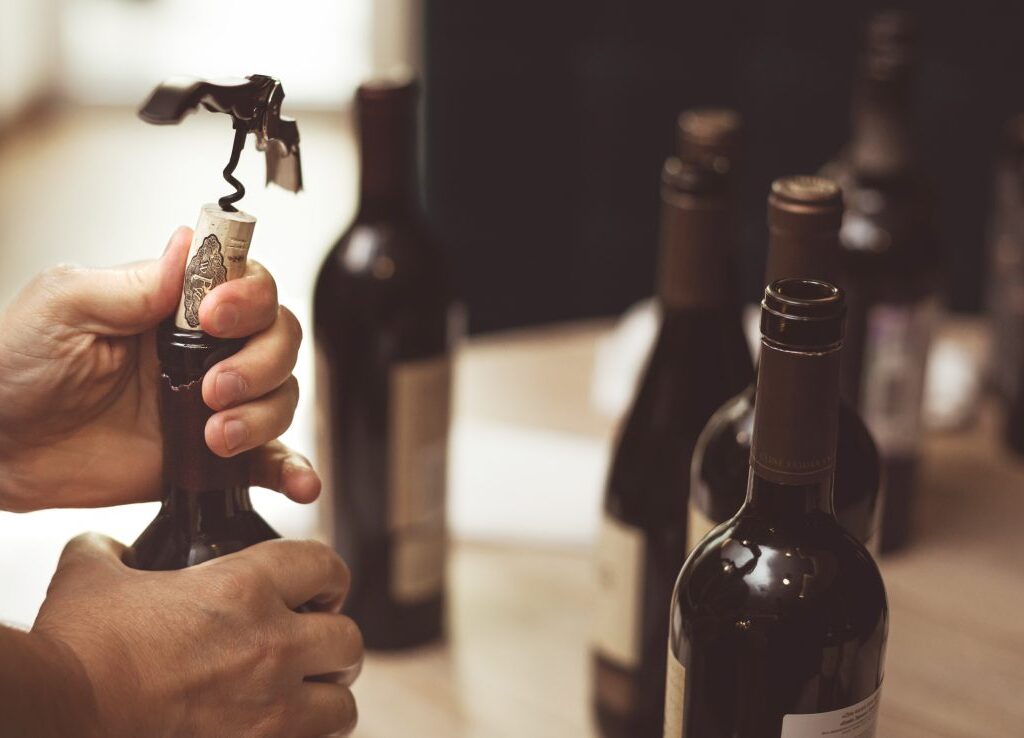Dingač Wine – All You Need To Know About It!
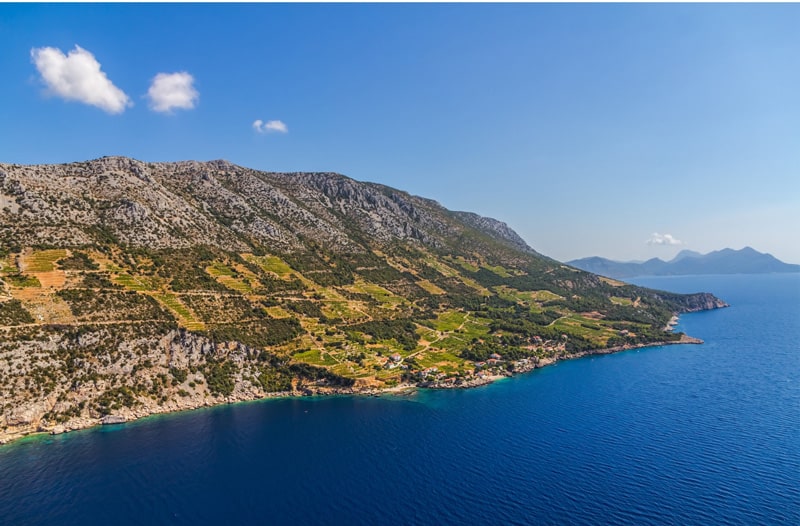
What is Dingač and what does it have to do with a donkey, “little blue” and powerful red wine? Find out more in this article about Dingač wine and its unique characteristics.
Is Dingač a grape?
No, Dingač is not a grape variety. It is a type of wine made from the Plavac Mali grape variety grown in the Dingač region of Pelješac, Croatia.
Plavac Mali (translates as “little blue”) is the most widespread variety of Dalmatia. The wines made of Plavac Mali are usually big, full-bodied, and tannic. To some, naturally high tannins of the Plavac Mali grape can be overwhelming, and often low acids can result in flabby wine. This can be overcome by growing in the best position and achieving balance in the vineyard. The best winemakers will use traditional methods and avoid over-extraction.
Aromatically, Plavac is all about dark fruit and spices such as carob, sage, and dried figs. Plavac Mali is very much Mediterranean in character and flavor, and it can show some earthiness and minerality. Aging potential is proven as the best Plavac wines can improve in the bottle after 20 years of cellaring.
When grown in Dingač, Plavac Mali yields ripe red wines of deep color and full body. Dingač is considered the king of Croatian wines, and even more than Plavac, the variety it is produced from, Dingač has become a globally recognized name! So if you are looking for a wine to sip on, remember Dingač – not simply a grape, but an experience.
What kind of wine is Dingač?
Dingač is a type of red wine produced in Croatia, specifically in the region of Pelješac. It is made from the Plavac Mali grape variety and is known for its full-bodied, fruity, and robust taste.
You can expect a Dingač wine to be full-bodied with high alcohol and a rich and robust flavor profile. It is known for its notes of dark fruit such as black cherry, blackberry, and plum, as well as spices such as black pepper and clove, and a hint of minerality. In addition, the wine is aged in oak barrels, which contributes to its complexity and depth of flavor.
As a premium wine, it is highly sought after and is considered a top choice for wine enthusiasts.
In addition, Dingač wines have a reputation for complexity and longevity; the finest representatives of Dingač can be cellared for many years.
Dingač wine pairing
Dingač wines are best enjoyed alongside hearty dishes such as game meats or beef steak and intense flavors like wild mushrooms and mature cheeses. The combination of complexity and fruit ripeness from Dingač and the strong profile of these dishes make them perfect partners – so don’t forget to pair Dingač with your next meal!
Where is Dingač wine from?
The Dingač wine-growing area is located on the southern side of the Pelješac peninsula in Croatia and covers an area of approximately 615 hectares (1520 acres). Dingač is a wine-producing area with a Protected Geographical Indication (PGI).
The unique characteristics of Dingač vineyards are due to their specific Mediterranean climate, soil quality, and steep inclination with southern exposure. It’s the most extreme conditions in which the Plavac Mali variety is cultivated. As a result, a job that would require an hour’s work from a winemaker at a conventional vineyard demands three hours on Dingač and Postup.
Dingač has been a protected winegrowing zone since 1964, protected as an area of origin in Geneva. Dingač’s neighbor Postup was similarly distinguished a few years later.
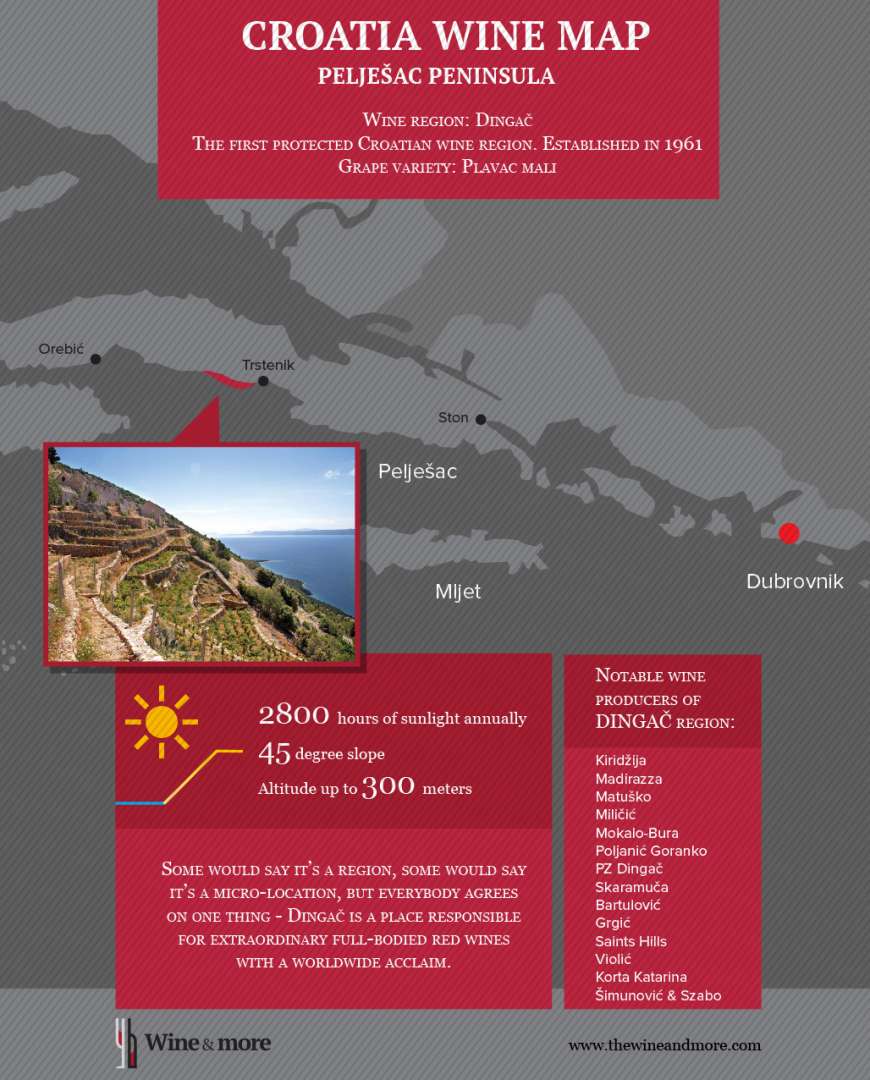
What’s with the Dingač donkey?
Due to the steep slopes of Dingač vineyards, the donkeys were helping the winegrowers to carry the crates of grapes during harvesting. The traditional donkey has always been a faithful companion of Dalmatian laborers and has thus become one of the symbols of Dalmatia. As a result, the donkey could be found as an informal logo on numerous labels of wine from Dingač’s position.
The donkey itself is not a protected emblem of origin, but many wineries, including Matuško, Dingač co-op, and others, symbolically use its image.
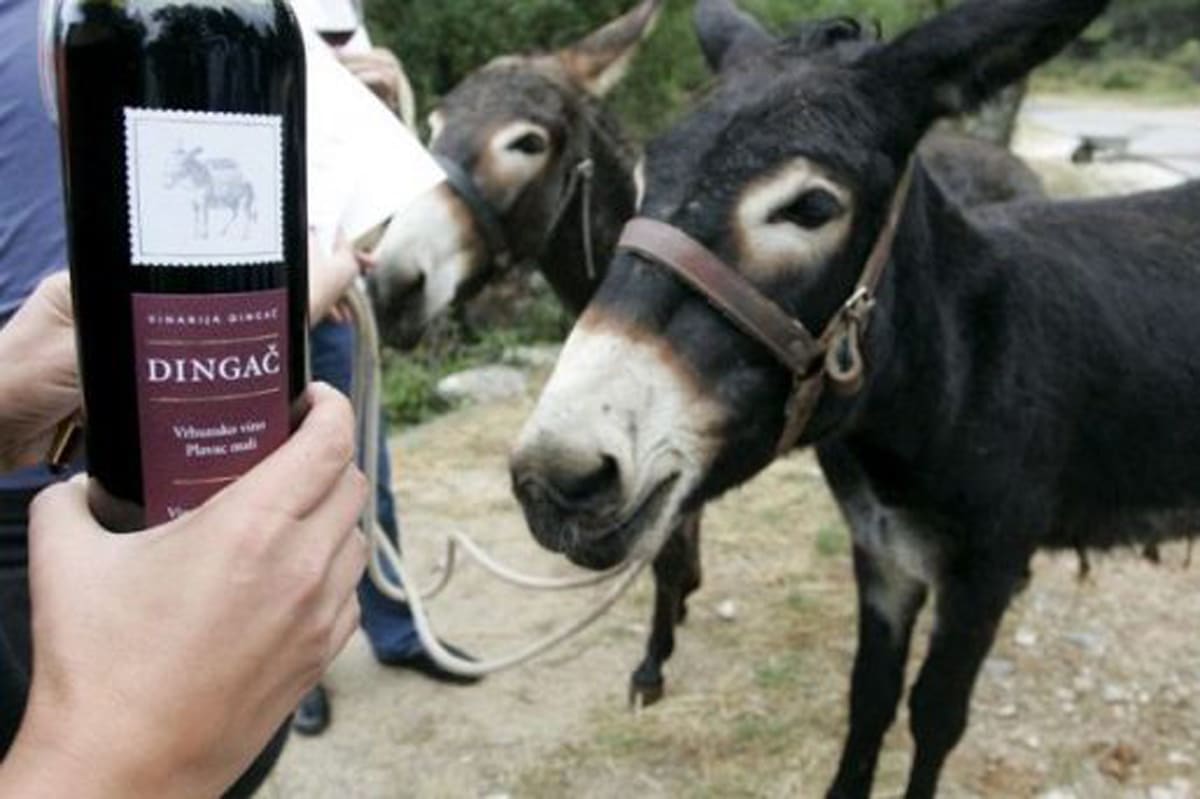
Dingač vs Plavac Mali
One of the essential things a wine lover should know about Dingač wine is that it is a premium, high-quality wine produced in limited quantities in the Dingač region of Croatia. The wine is made from the Plavac Mali grape variety and is known for its full-bodied, fruity, and robust taste with high alcohol content.
Dingač wine is protected by the Dingač Appellation of Origin, which guarantees that strict regulations regarding grape selection, winemaking processes, and aging requirements produce the wine. The wine is typically aged in oak barrels, contributing to its complexity and depth of flavor and softening the tannins.
Why is Dingač so special?
Dingač and the neighboring Postup area are considered the most extreme conditions in which Plavac Mali can be cultivated.
In these conditions, the vines experience what is known as triple insolation. This is due to the vineyards being exposed to three sources of intense sun.
- Firstly, direct sun rays are intensified by the dry and rain-deficient location.
- Secondly, the vineyards are exposed to reflected sun rays from the sea, which are very intense when the vineyard is tilted at 45 degrees.
- Lastly, the vineyards are exposed to sun reflections from the white rock surfaces, which reflect the sun from below the vine.
As a result, the wine from Dingač and Postup is essentially liquid solar energy. The vines find sustenance through roots reaching up to ten meters deep on this rocky terrain. This allows the grapes to withstand even the driest droughts and the heaviest rains due to the earth’s tilt acting as natural drainage.
What does Dingač wine taste like?
Dingač is a wine of the sun and the stone, with strong, concentrated, and ripe fruit aromas. But in its best years, under the direction of the best winemakers, it leaves subtle sensations that tasters associate with sage, Dalmatian karst, and maquis, herbs that grow on Pelješac in abundance.
Luckily, these God-given positions don’t require much supervision, and in most Dingač vineyards, cultivation occurs entirely ecologically. The result is a wine high in the extract, which is generally high in alcohol too.
A Plavac of such structure requires the mastery of a winemaker who will know how to form it in the cellar to preserve its character and identity and accomplish a balanced wine.
Those who don’t like to feel acidity in their wine but instead appreciate the warmth and richness of a Dalmatian red wine will find themselves at home with Dingač and Postup. The fruitiness of Plavac is often compared to dry figs and carob. It’s only necessary to anticipate a little bit of tannin.
The tannic qualities of Plavac Mali are legendary, and the best Plavac from Dingač requires no tiny bit of expertise in the cellar. However, a skilled cellar master will know how to soften the tannins using wooden barrels.
Climate change effects on Dingač wine
As average temperature increases and drought periods become longer and more severe, Dingač is no exception. Even the old vines suffer during summer, and hibernation of the grape disables the even ripening process. Dingač traditionally achieved the Plavac grapes with the highest fruit ripeness and even more so today.
Because of the presence of dried berries in the Plavac Mali grape variety, the alcohol content of some vintages approaches the highest possible limit, which can be achieved by natural fermentation.
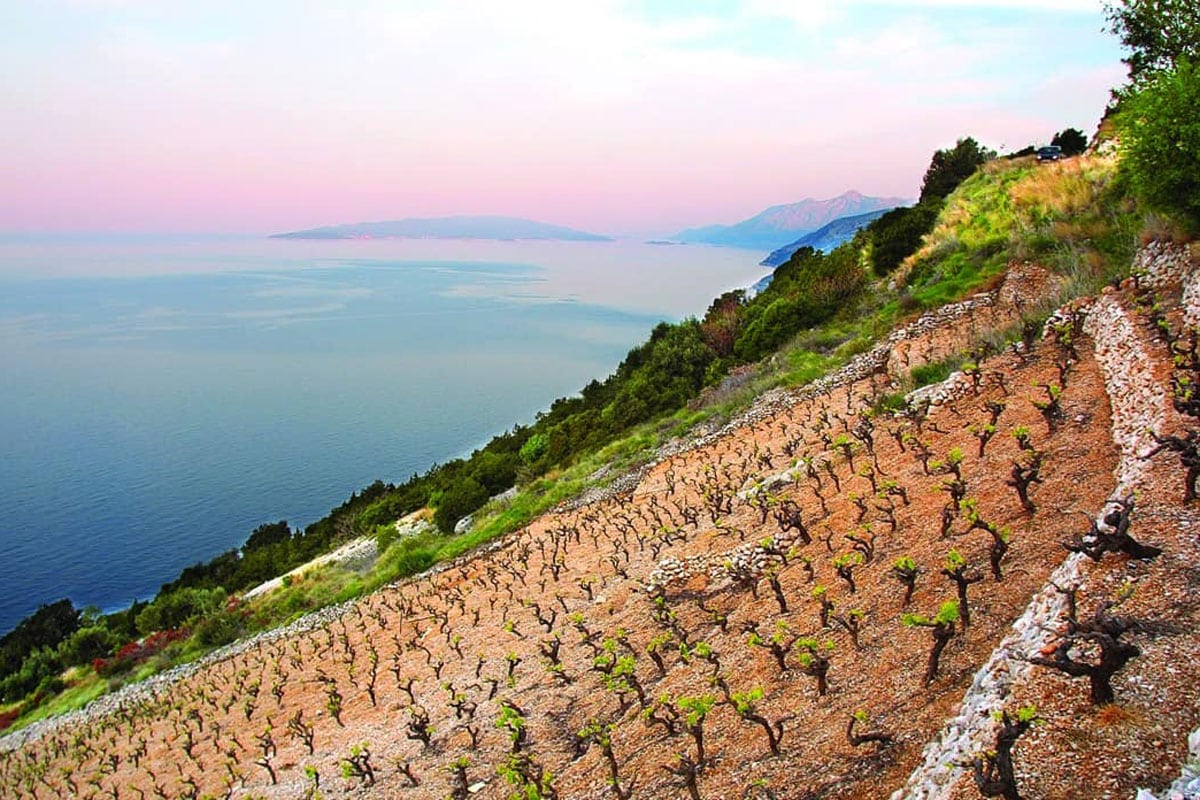
Sometimes, the fermentation spontaneously stops, leaving unfermented sugar in the wine, making Dingač semi-dry.
This is not of recent date. However, naturally lower acid levels of ripe Plavac become even lower, and this lack of acids is hard to compensate for in a natural way.
The winemakers in Dingač are doing their best to preserve the essential qualities of Dingač. Producers continue the traditional farming practice using natural methods and combine them with modern technologies to maximize their quality and minimize the effect of climate change on Dingač wine. With careful management, Dingač will remain one of Croatia’s most exclusive offerings for years to come.
Conclusion
Dingač is a unique tasting experience that should not be missed! So make sure to pick up a bottle of Dingač on your next trip to Croatia!
Happy sipping!
Cheers,
The Dingač Team 🙂



